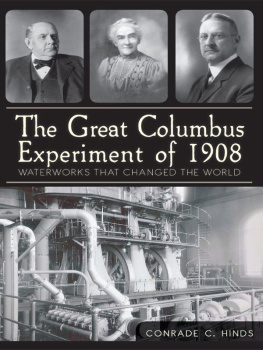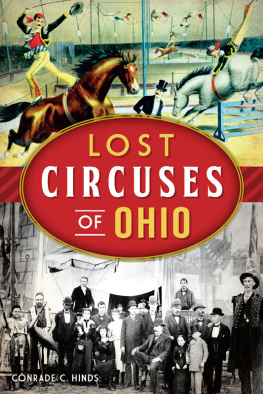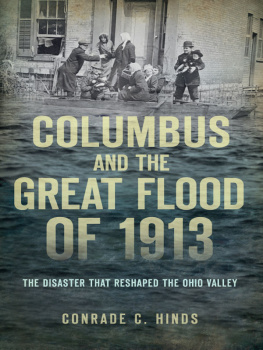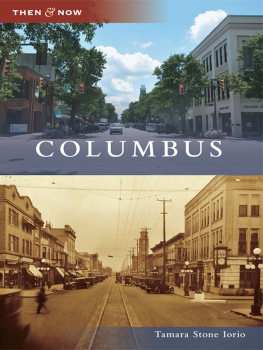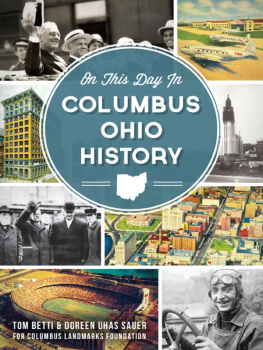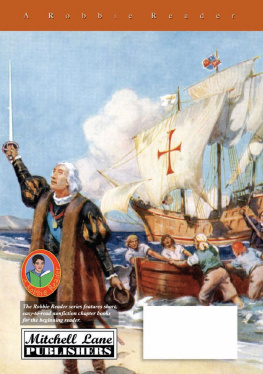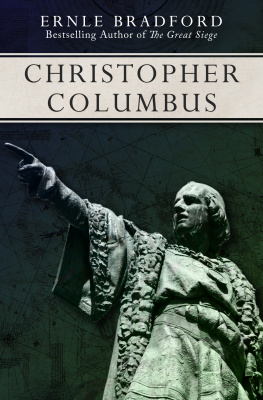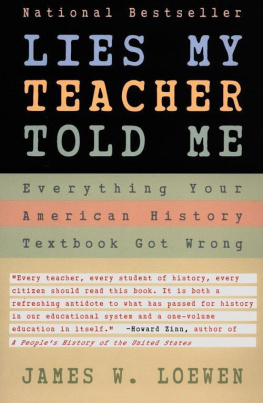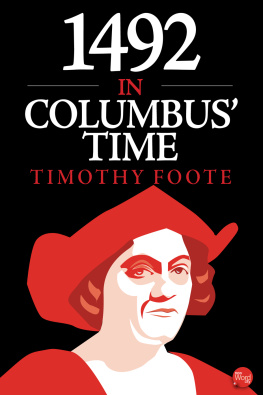

Published by The History Press
Charleston, SC 29403
www.historypress.net
Copyright 2012 by Conrade C. Hinds
All rights reserved
First published 2012
e-book edition 2012
Manufactured in the United States
ISBN 978.1.61423.685.6
Library of Congress CIP data applied for.
print ISBN 978.1.60949.779.8
Notice: The information in this book is true and complete to the best of our knowledge. It is offered without guarantee on the part of the author or The History Press. The author and The History Press disclaim all liability in connection with the use of this book.
All rights reserved. No part of this book may be reproduced or transmitted in any form whatsoever without prior written permission from the publisher except in the case of brief quotations embodied in critical articles and reviews.
Contents
Preface
The history of the 1908 Columbus Experiment is a story about a communitys quest for clean drinking water. Yet, most Americans, and in my experience, the people of Central Ohio, dont have an intrinsic understanding of their history because the earned wisdom and lessons embedded in the past are often not communicated or understood. Consequently, they are hardly ever exposed to what I call a premier historian.
A premier historian is not a doctoral candidate conducting research to establish tenure. Rather, this individual is a curious storyteller who can set the mood and reestablish the feeling of a particular place in time, recall the drive and the host of emotions and excitement that connect us to past events. Without the acute storyteller, the general public will likely not be able to fully appreciate or care to recall its own significant history. Many think that true history is only a chronological record of significant events that impacted a nation, institution or individual. This chronology may or may not include an explanation of the reasons behind the events recorded; most often, it is merely a list of mundane historical facts and moments devoid of analysis or holistic interpretation of the world surrounding the events.
Significant events will also not be recalled as great history because they lack the polish of the storytellers narration. This is why so many stories that are not quite as sophisticated in content or meaningful get ample attention when presented with spoken commentary or explanation in a movie or television series. The viewer is given information while being able to observe and imaginatively place themselves safely in the actions.
Although history is a story of the past, I have found that people will appreciate and relate to history more when they can connect with people from that era who have made even a small impression on them. For instance, fans of westerns may recognize 1907 as the year John Wayne made his screen debut. Likewise, 1908 saw the birth of Mel Blanc, the man who was the voice of so many cartoon characters, such as Bugs Bunny and Daffy Duck, that so many grew up watching. Those who had an influence on an era are then remembered as shaping the twentieth century and our lives. So in order to bring to life the events and culture surrounding the 1908 Columbus Experiment, I have cited a number of peripheral and mainstream headlines from the period as well as people who were affected by the results of Columbus aggressive implementation of a new kind of public service.
The history of the 1908 Columbus Experiment and its impact on public health standards affects everyone worldwide. Many people die each day because they lack access to clean, potable water. The World Health Organization (WHO) estimates that thirteen thousand children die each day due to water-borne diseases. The Columbus Experiment itself was the amalgamation of Americas best technology and engineering work, the progress garnered from nineteenth-century public health innovators and the harsh lessons learned from the minimal sanitary standards in medical treatment during the Civil War. It is imperative to recognize that the true measure of the relevance of local homespun history is the impact that it has on the world. After all, the world has always played a large role in determining many of the daily activities associated with life in rural, small town and urban America. Progress in the developing nations in both hemispheres in the early twentieth century was unmistakably contagious and knew few boundaries.
Acknowledgements
Ohio wasnt built by America, but it is my opinion that America was built by Ohios broad application of its profound innovative spirit, and for that, I am very grateful.
Thank you, Tom Betti and Doreen Uhas Sauer, for extending an invitation to participate in writing a book for the Columbus Landmarks Foundations history book series, and to my wife, Dr. Janet L. Hinds, for her help in scholarly research and generous sharing. Thanks to the Education Committee of the Columbus Landmarks Foundation for their insight and creativity. A note of gratitude to the following: Dr. Joseph and Ruth Waggener; Dr. Richard and Gloria Clossman; Charles Sappenfield; Arthur and Beverly Brown; George W. Cox; David and Ann Dale; Marvin and Elsa Reichle; and Martin and Helen Schwartz. Thank you all for your positive encouragement and for opening the doors of opportunity for me over the past forty-plus years. And my continued thanks to all of those who supported preserving Columbus heritage as an international leader in the field of water and wastewater technology: John Doutt, Jeff Hubbard, Lynn Kelly, Tom Galitza, Tom Camden, Dr. Rick Westerfield, Craig Charleston, Anthony Kohler, Debbie Ashley, Bill Clark, Lee White, Steve Tiberi, Dan Davis, John Wenig, Jay Gillispie, and the staff of The Dublin Road Water Plant past and present.
A special thanks to my late parents and grandparents, Dr. Conrade and Ada Hinds and Russell and Ethel Davidson for sharing their insight and wisdom. I would also like to extend my gratitude to John and Ellen Stukenberg, Chuck Rinehart, Dave Busch and Dean Bortz for their confidence in me as an educator. Thanks also to John Sauer, for his constructive editing, and to the Board of Columbus Landmarks Foundation, for their support and the ever-creative Education Committee. And finally, to Joe Gartrell of The History Press.
Photo credits: Columbus Metropolitan Library Image Collections (CML), Ferdinand Hamburger Archives at The John Hopkins University (FHJH), the Columbus Dispatch (CD), Columbus Citizen Journal (CCJ), Conrade Hinds Collection (CH), Private Collection (PC), Ohio Historic Society, Columbus Division of Water (CDW) and the Library of Congress.
Introduction
Too many pivotal events in America often go unappreciated by the general public because people are disconnected by generations and believe that they do not possess any tangible connection to past events. The 1908 Columbus Experiment was like the 1969 moon landing to the worlds engineering and emerging public health community of that time. The massive potable public waterworks project provided a public health service that the people of Columbus and Central Ohio eventually began to take for granted. A negative connotation that is widely used in many realms of modern society is that once something or someone has finished or completed a task, it soon becomes a part of history and is generally ignored. In other words, it becomes yesterdays news, and news is only good if it is served fresh daily. Also, as many of these great accomplishments begin to be taken for granted, the memories, records and history of the work, as well as the sacrifice involved in securing various advancements, are soon labeled as antiquated and are erased and forgotten. An unfortunate example of this was the tragic loss of the construction drawings, details and artifacts of the former West Side Pumping Station on Old Dublin Avenue and the original East Side station on Nelson Road.
Next page
